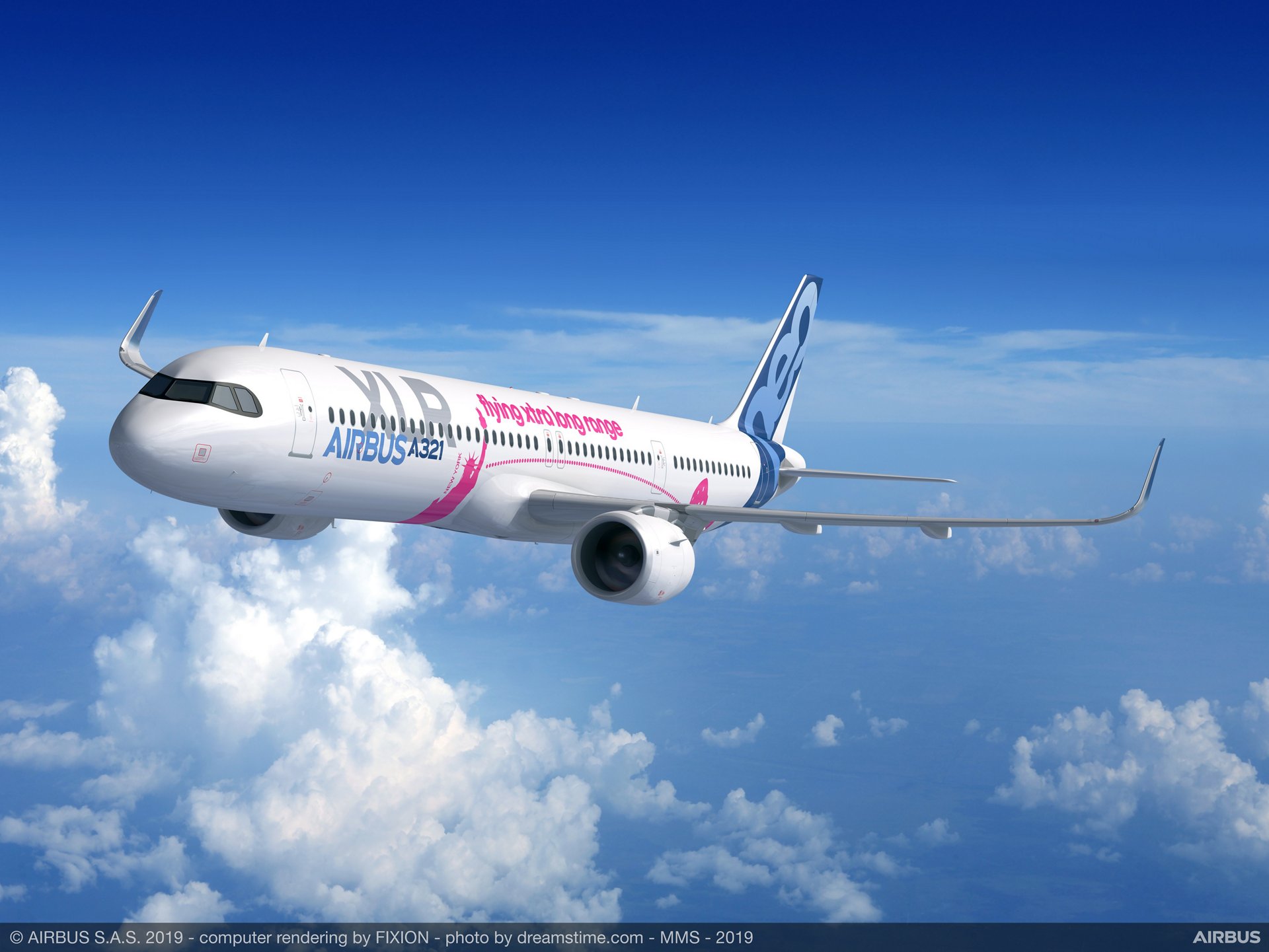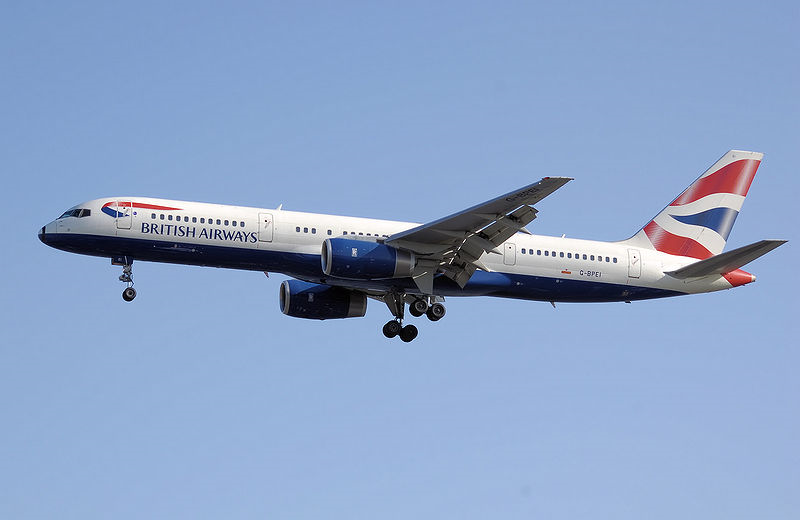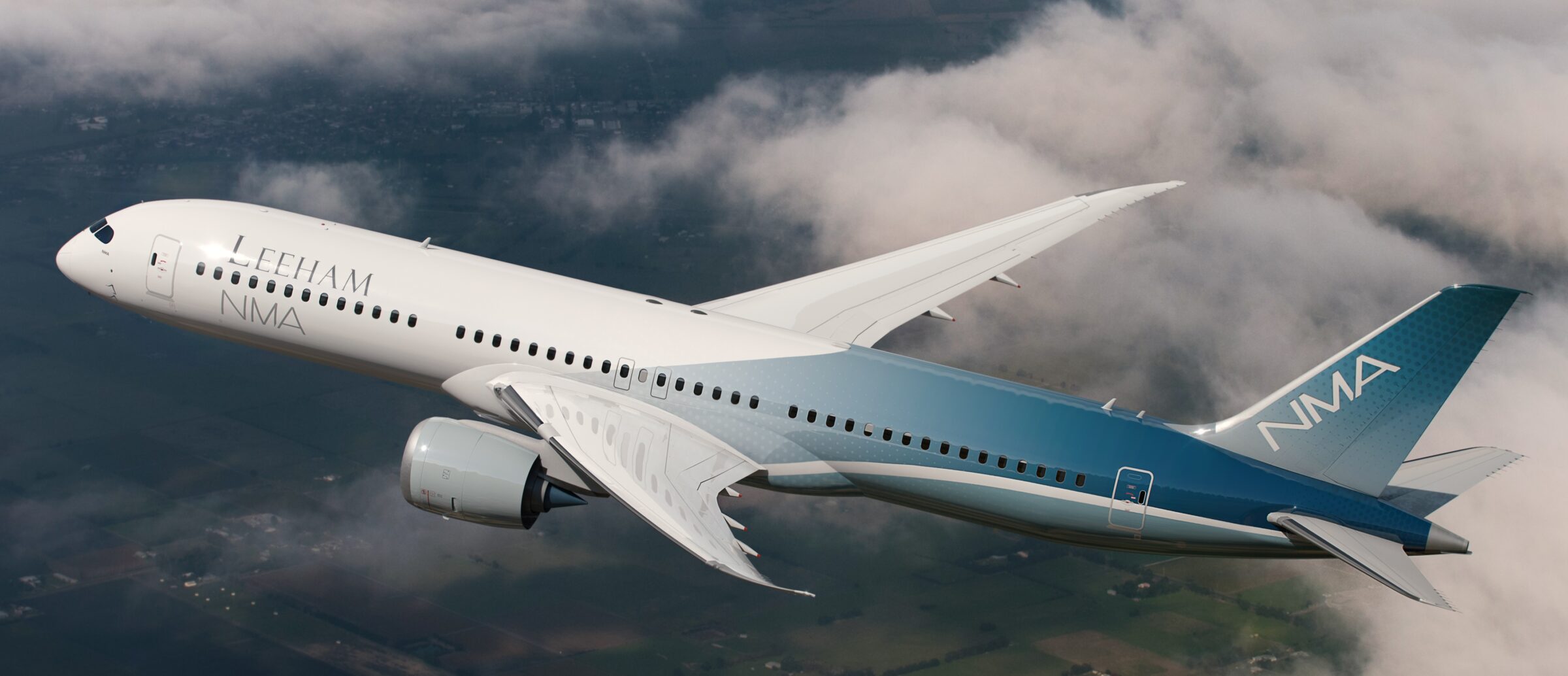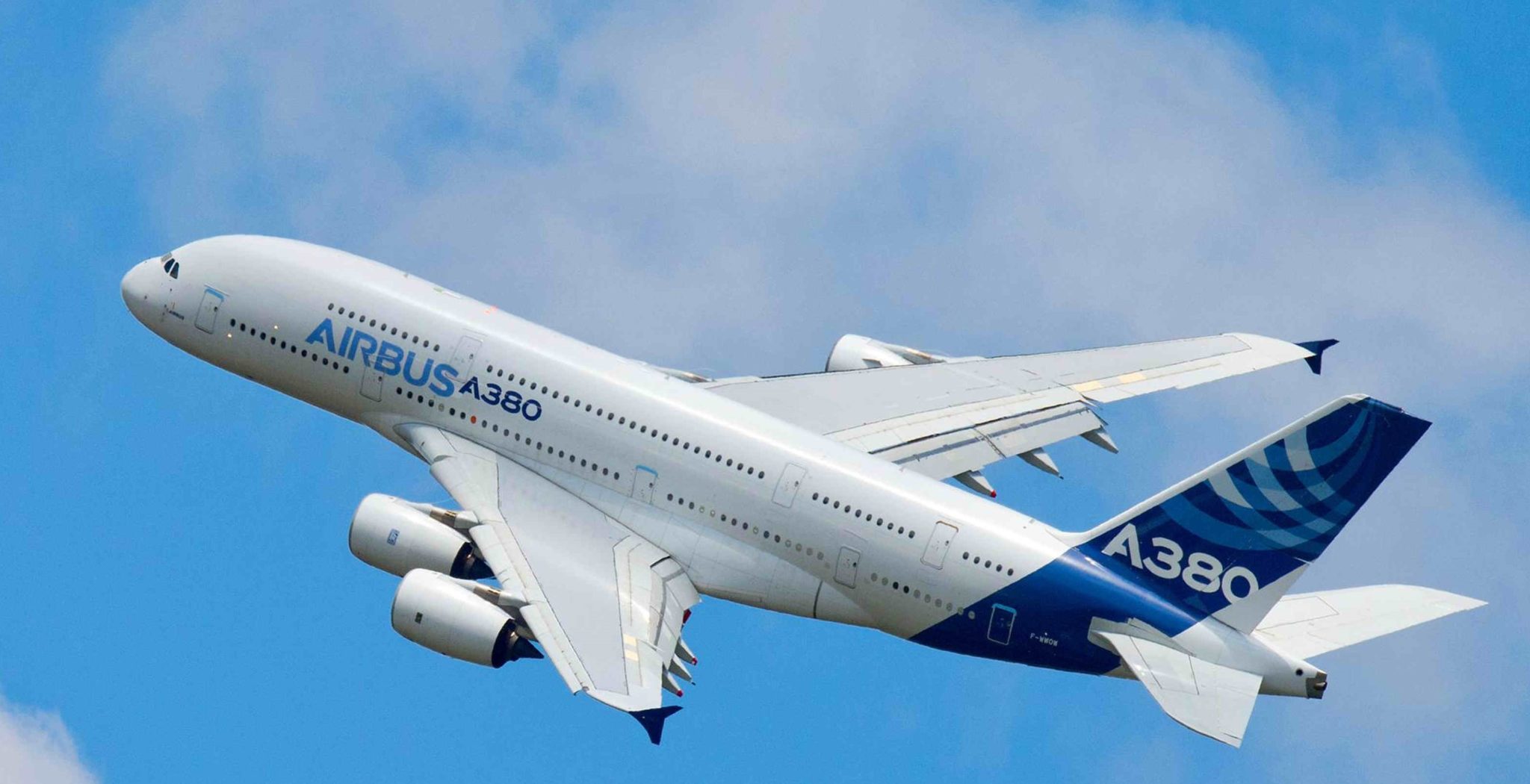Leeham News and Analysis
There's more to real news than a news release.
JetZero readies effort for private equity fund raising
Subscription Required
By Scott Hamilton
May 5, 2025, © Leeham News: JetZero, the start-up company developing commercial aviation’s first passenger Blended Wing Body (BWB) airplane, is gearing up to seek private equity funding for billions of dollars needed to bring its aircraft to market.
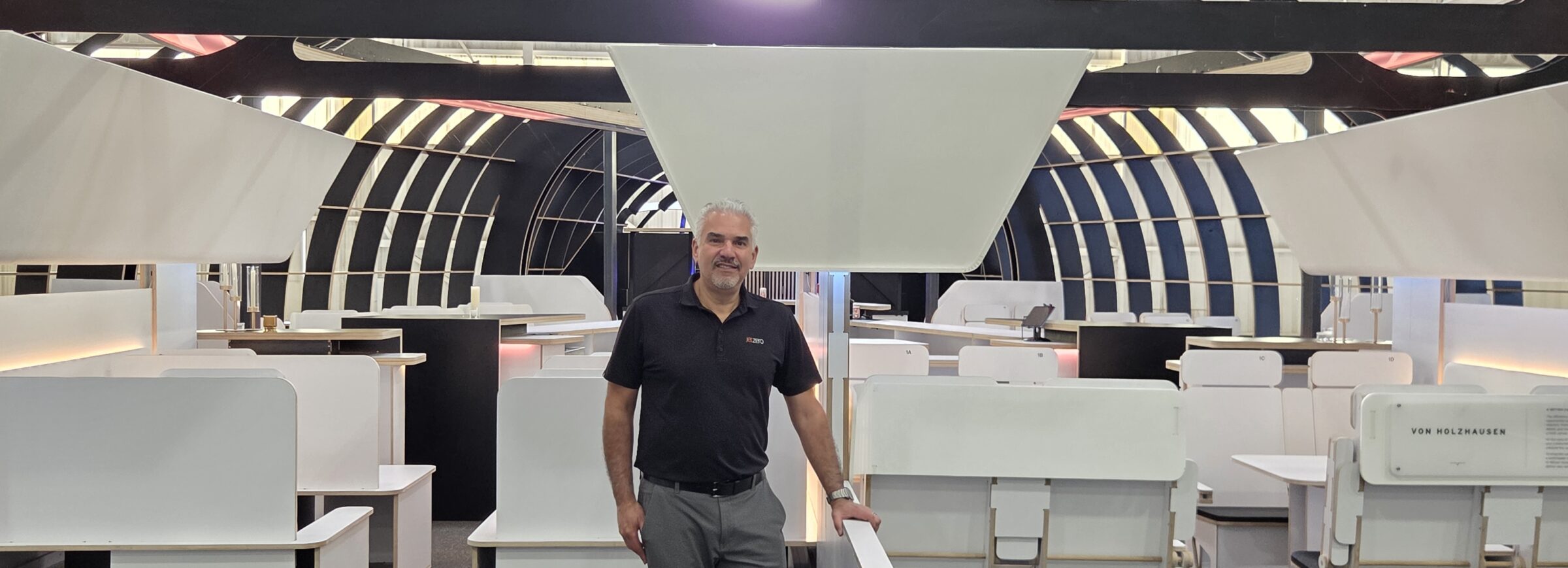
JetZero president and COO Dan da Silva demonstrates the human scale of the Z4 Blended Wing Body mock-up at the company’s Long Beach (CA) facility. Credit: Leeham News.
In a media day on Friday, executives and staff briefed reporters on progress to date, production work on the first full-size demonstrator aircraft, technical details and studies continuing an production plans.
Officials expect to announce a site selection for its final assembly plant in the coming weeks, before the Paris Air Show that begins in mid-June.
JetZero’s airliner is dubbed the Z4. It’s nominally a 250-passenger, 5,000nm design for the so-called Middle of the Market currently occupied by out-of-production and aging Boeing 767-300ERs, Airbus A330-200s and a limited number of Boeing 757s. Entry-into-service is targeted for the “early 2030s.” The first flight of the demonstrator aircraft is planned for 2027.
JetZero has an ambitious goal for producing the composite aircraft. The final assembly site, for which the company has down-selected the finalists, will be on a 1,000 acre site with a building about the size of Boeing’s widebody plant in Everett (WA). Boeing’s Everett site is somewhat larger than 1,000 acres.
JetZero is planning for a monthly production rate of 20 five years after production begins. The company has hundreds of conditional orders from major airlines.
Daunting tasks remain in the coming years. Among them: there is currently no engine commitment for the airplane; a product support system is needed; finalizing the method to product the composite airplane; “flying” the iron bird; and much more.
To what extent can the A321XLR replace the Boeing 757, Part 4
Subscription required
By Bjorn Fehrm
August 1, 2024, © Leeham News: We are comparing the Airbus a321XLR to the Boeing 757 to understand to what extent it can replace the 757 on the longer routes it operates for major airlines like United, American, and Delta.
We have examined the aircraft’s development and operational history, their Apples-to-Apples capacity and range, and their operational costs for a typical domestic configuration. Now, we equip the A321XLR with a long-range, lie-flat cabin and look at what long-range routes it can fly in this configuration.
Summary:
- The A321LR/XLR can fly up to 10-hour routes in a long-range configuration, flying from mid-USA to mid-Europe.
- With its passenger capacity, range, and operational economics, it covers most of what Boeing set out to cover in its MOM and later NMA studies.
To what extent can the A321XLR replace the Boeing 757, Part 3
Subscription required
By Bjorn Fehrm
July 11, 2024, © Leeham News: We are comparing the Airbus a321XLR to the Boeing 757 to understand to what extent it can replace the 757 on the longer routes it operates for major airlines like United, American, and Delta.
We have looked at the development and operational history of the aircraft, their Apples-to-Apples capacity and range. Now, we use Leeham’s Aircraft Performance and Cost Model (APCM) to compare the operational costs of the aircraft.
Summary:
- The Boeing 757-200 has the same passenger capacity as the A321LR/XLR and a larger cargo capacity.
- Its range can compete with the A321LR but not the XLR. Both beat the 757 on operational economics.
To what extent can the A321XLR replace the Boeing 757, Part 1.
Subscription required
By Bjorn Fehrm
June 27, 2024, © Leeham News: The Airbus A321XLR, the extra-long-range version of the A321neo, will start operational service with IBERIA on the Madrid-Boston trans-Atlantic route later this year. It’s the type of thin, long-range route the Boeing 757 has served to date.
We will use our Aircraft Performance and Cost model (APCM) to examine to what extent the A321XLR can replace the 757 on world routes. What is the difference in capacity and range, and what improvement in operational economics can be expected?
Summary:
- The Boeing 757 was the original MOM/NMA (Middle-Of-the-Market / New-Midmarket-Airplane).
- It had unique characteristics, which Boeing would have followed up with the NMA project.
- Boeing hesitated, and Airbus developed the A321XLR to fill this role. Has it succeeded?
The Economics of the 767 and A330 at Seven and Eight abreast
Subscription Required
By Bjorn Fehrm
Introduction
Dec. 8, 2022, © Leeham News: In a previous article, we started speculating what an NMA type of aircraft would look like based on a Boeing 767 cross-section. An airliner’s cross-section decides the design of a large number of parts in an airplane.
In essence, a fuselage is a tube with a constant cross-section where the constant parts are repeated framewise to form the fuselage. It’s finished with a tapering forward cockpit and a rear tapering empennage.
We now look at what could have been a passenger version of an NMA that would have used the Boeing 767 cross-section with adaptations. To understand its economic impact, we make a comparison where we take a standard 767-300ER, then modify it to an NMA type fuselage and compare it to the competition in the size class, the A330-200 and -800.
As before, we do this by flying the world’s busiest long-haul route, London Heathrow, to New York JFK.
Summary
- An NMA based on an improved 767 fuselage cross-section would have been a very competitive airliner
- I would be the ideal replacement for the Boeing 757, 767, and 787-8.
Why the A380 didn’t sell
Subscription Required
By Bjorn Fehrm
Introduction
November 25, 2021, © Leeham News: The last A380 will be delivered to Emirates in the coming week, after a production run of only 251 units. Why didn’t Airbus sell more?
What was the trouble with the A380? Was it uneconomical, or was there some other problem? We look into the different factors that made it a hard sell to the world’s airlines and support this with comparisons with aircraft that sold better.
Summary
- The A380 had its shares of development problems, mainly in the installation of a complex electrical system. Still, overall the development and production went reasonably well for being a new type for Airbus.
- We have over the years shown that its seatmile costs were competitive versus alternatives. What was then the problem? Why didn’t it sell?
Differentiation in the marketplace and the time for the open rotor
Subscription Required
By the Leeham News Team
Introduction
Feb. 22, 2021, © Leeham News: Airliners are now so efficient, one challenge facing Airbus and Boeing in competing is overcoming the laws of diminishing returns.
LNA described this challenge Feb. 8. Additionally, airport infrastructure erects a vast number of design roadblocks.
We focused on the creation of the 737 replacement and how difficult it will be to make meaningful performance upgrades to the economics of the vehicle. We outlined the next battle in product differentiation most likely will occur in optimizing non-flying time operations, focusing on ground operations as the next efficiency battleground. Since then, it was reported that Boeing indicated that a new aircraft sized between the 737 and the 767/NMA was a front runner in their future planning.
Summary
- NMA Lite needed for 737-9/10 to 787-8 sector.
- Replacement for 737-7 and 737-8 best suited for Open Rotor design.
- What an Open Rotor plane might look like
Boeing’s Renton plant may close from 2033: Analysis
Subscription Required
Now open to all Readers.
Introduction
Aug. 10, 2020, © Leeham News: With Boeing likely to consolidate 787 production in Charleston (SC), reflecting a rate of 6/mo, the future of assembly in Puget Sound rears its head again.
LNA outlined Aug. 3 why Everett is the ideal location to assemble the Next Boeing Airplane (NBA).
Boeing’s product line also requires a new airplane in the 100-150 seat sector. Airbus’ A220-100/300 and, nominally, the A320neo (but not the A319neo) fill this sector. (The A320neo was originally designed as a 150-seat airplane. It now is commonly configured in the 150-180 seat size.)
Airbus has a design for an A220-500, which could replace the A320.
Boeing needs an efficient competitor to the current A220 plus a replacement for the 737-7 and, eventually, the -8.
And it probably won’t be assembled at the Boeing 737 plant in Renton.
Summary
- Boeing-Embraer JV was to focus on 100-150 seat airplane.
- Canceled deal could be revived.
- Or Boeing could choose a new partner.
- Moonshot would be two roughly concurrent new airplane programs.
“It’s not easy to compare:” Airbus’ CEO Faury
- Guillaume Faury has been the chief executive officer of Airbus Group since April 1. In this exclusive interview, he looks back on his first six months and ahead for the future of the company. Part 1 appeared Oct. 30. This is the second of two parts.
Nov. 6, 2019, © Leeham News: “It’s not easy to compare the performance of the two companies,” says Guillaume Faury, the CEO of Airbus, when the inevitable comparisons between his company and Boeing are made.
The context was talking about advanced manufacturing, discussed in Part 1 of this interview.
“I don’t think we are behind on digital. I think they might have gained more preparation on the future of production systems. We are catching up big time if not ahead in some important places. I think we will know who’s first when the next generation of airplanes is launched. These will be the first ones with digital design and manufacturing. There’s not a single plane today which is full DDMS.”
The issue is key to the next new airplane produced by Airbus or Boeing.
Is reengining the Boeing 767 a good idea? Part 2.
By Bjorn Fehrm
Subscription Required
Introduction
October 24, 2019, © Leeham News: According to FlightGlobal, Boeing is investigating reengining the 767-400ER with GE GEnx engines to produce a new freighter and perhaps a replacement for the NMA project.
We started an analysis of what this would look like last week where we analyzed the aircraft fundamentals. Now, we continue with the capacities of passenger and cargo variants. Summary:
Summary:
- The 767-400ER is one size larger than the largest NMA. It would be a competitor to the Boeing 787-8. This makes the variant doubtful as an NMA replacement.
- As a cargo variant, it adds less than 20% of cargo volume on top of the present freighter, the 767-300F. Is this attracitve enough to motivate a reengine for a freighter?


